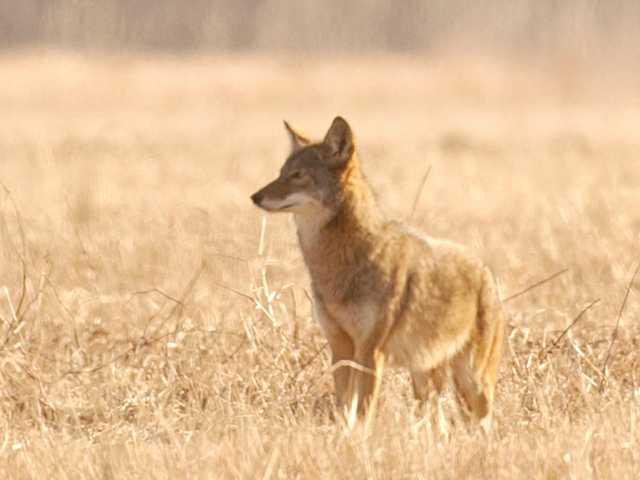- Make sure pets stay indoors in the evenings, which is the coyote’s primary hunting time.
- If a pet needs to stay outside, install a fence or bright lights to keep coyotes away.
- Keep small livestock in an enclosed, sheltered area.
- Never, under any circumstances, feed a coyote.
- Be mindful of grills, pet food and bird feeders, making sure they don’t become a food source for a coyote.
- Keep trash cans inaccessible and make sure lids are fastened securely.
Every morning, Jeré McMahan wakes up, opens her sliding doors and lets her small pets run around in her yard.
She has some coffee, comes inside and waits for her cats and poodle to return.
However, Sunday morning was different when her dog didn’t come back.
When one of her cats came in from its morning romp a little more skittish than usual, McMahan took a look outside — and locked eyes with a coyote.
“Here is this blame coyote standing within 8 feet of me,” McMahan said. “Go figure on that. It was so comfortable and not scared of
humans at all.”
Melissa Cummings, spokeswoman for the Georgia Department of Natural Resources Wildlife Resources Division, said humans don’t usually encounter their wily neighbors because the coyote is very elusive and usually comes out at night. However, she said every county in Georgia has a coyote population.
“They’re everywhere,” Cummings said. “They can exist in very small areas, and a lot of times you don’t even know that they’re there.”
Unless the coyote is exhibiting rabid behavior — acting fearlessly or more aggressively — they aren’t something humans need to worry about.
“In a normal scenario, a coyote is going to run from a person,” she said. “They’re not going to approach someone.”
The coyote will, however, hunt small rodents, house pets and young livestock — and that’s where McMahan’s concern lies.
Since Sunday’s coyote spotting near her home at Clarkes Bridge Corners Condominiums, McMahan hasn’t seen her 9-pound poodle, Snow.
She’s put up fliers and searched in the woods behind her yard, but to no avail.
Cummings offered some advice for pet owners suspecting a coyote near their homes.
She said actions such as fencing in the back yard, making sure the animal is inside at night and installing bright lights would help keep coyotes away.
“They’re relatively simple, and they aren’t hard to do,” Cummings said of prevention techniques. “We have to retrain ourselves sometimes to help them live a better life and to help us live a better life.”
Another option for dealing with coyotes would be to contact a nuisance wildlife trapper who could come out to remove the animal.
The DNR maintains a list of trappers on its website, but the agency doesn’t provide the service directly.
Parker Barnett, a nuisance wildlife biologist with AWL Wildlife Removal and Management Inc., said he gets about one call a week to deal with coyote removal in Northeast Georgia.
When he gets a call, he scopes out the area where the coyote was seen, confirms the existence of a coyote and determines the best method to trap the animal. He said under Georgia law, all trapped coyotes are euthanized.
Barnett said he gets more phone calls in the summer months than at any other time.
“Generally, it’s this time of the year because the coyotes are trying to provide for their pups and are hunting more regularly,” he said.
He said coyotes are opportunists — eating things such as garbage, fruits, vegetables and small dogs and cats — and he said the only way to get rid of a coyote is to trap it and remove it.
“They become habituated to people,” he said. “They understand that they don’t have to work very hard to get a free meal.”
Last June, large cat sightings were frequent in Hall County, but none were ever confirmed. However, residents blamed chicken deaths and livestock attacks on the elusive mountain lion, and one woman even claimed the cat killed her horse.
This is the second time McMahan has seen a coyote in her neighborhood, the first occurring in late May, and she said neighbors have seen it too.
“For an urban area, we sure are wild out here,” she said.
Cummings said there has been an acclimation to urban environments among several wildlife populations — including the coyote — but she said humans could adapt to living near the animals.
“Humans and wildlife have to interact in some capacity,” Cummings said. “And we are the ones who kind of have to do the educating for ourselves.”

